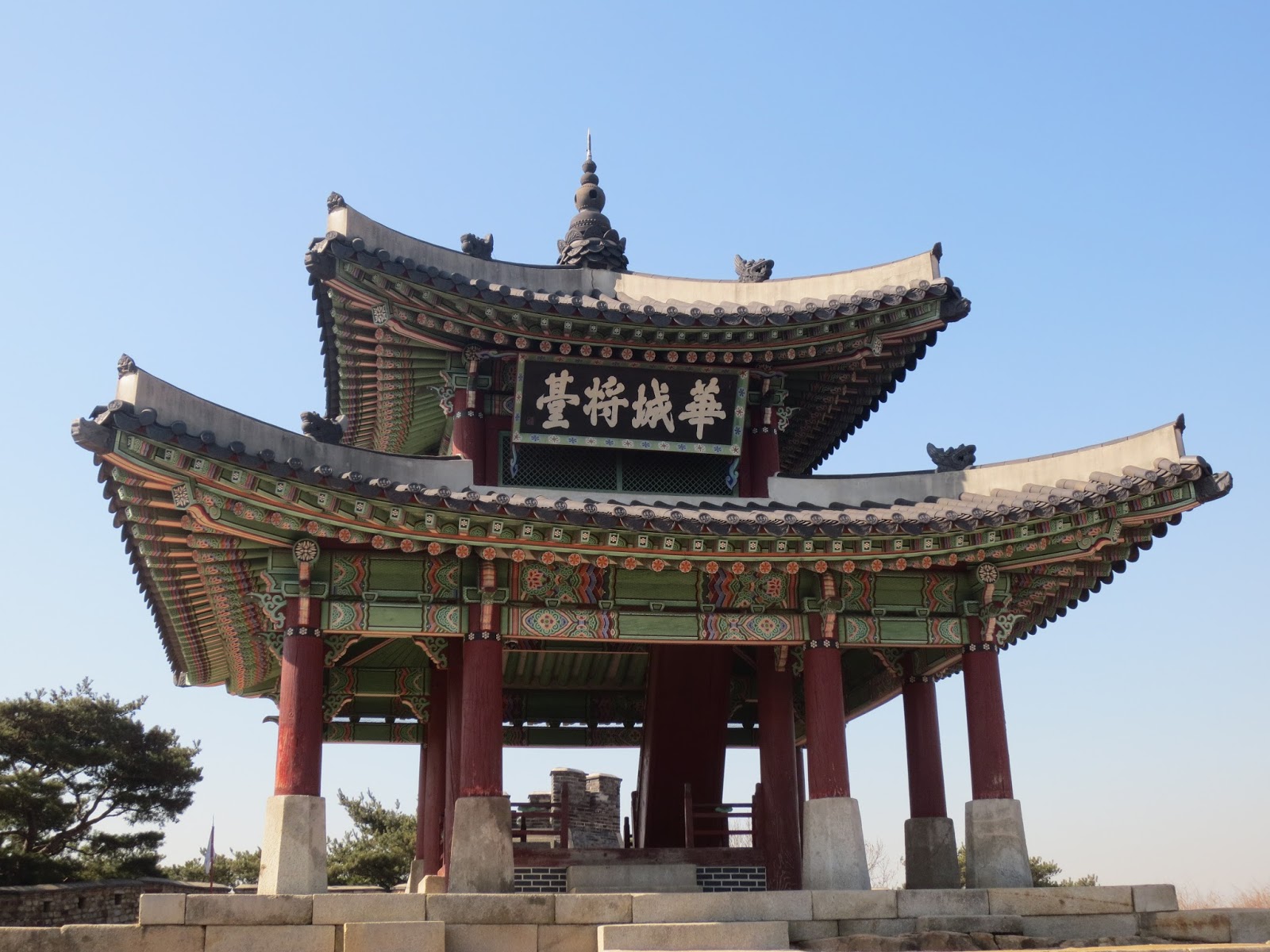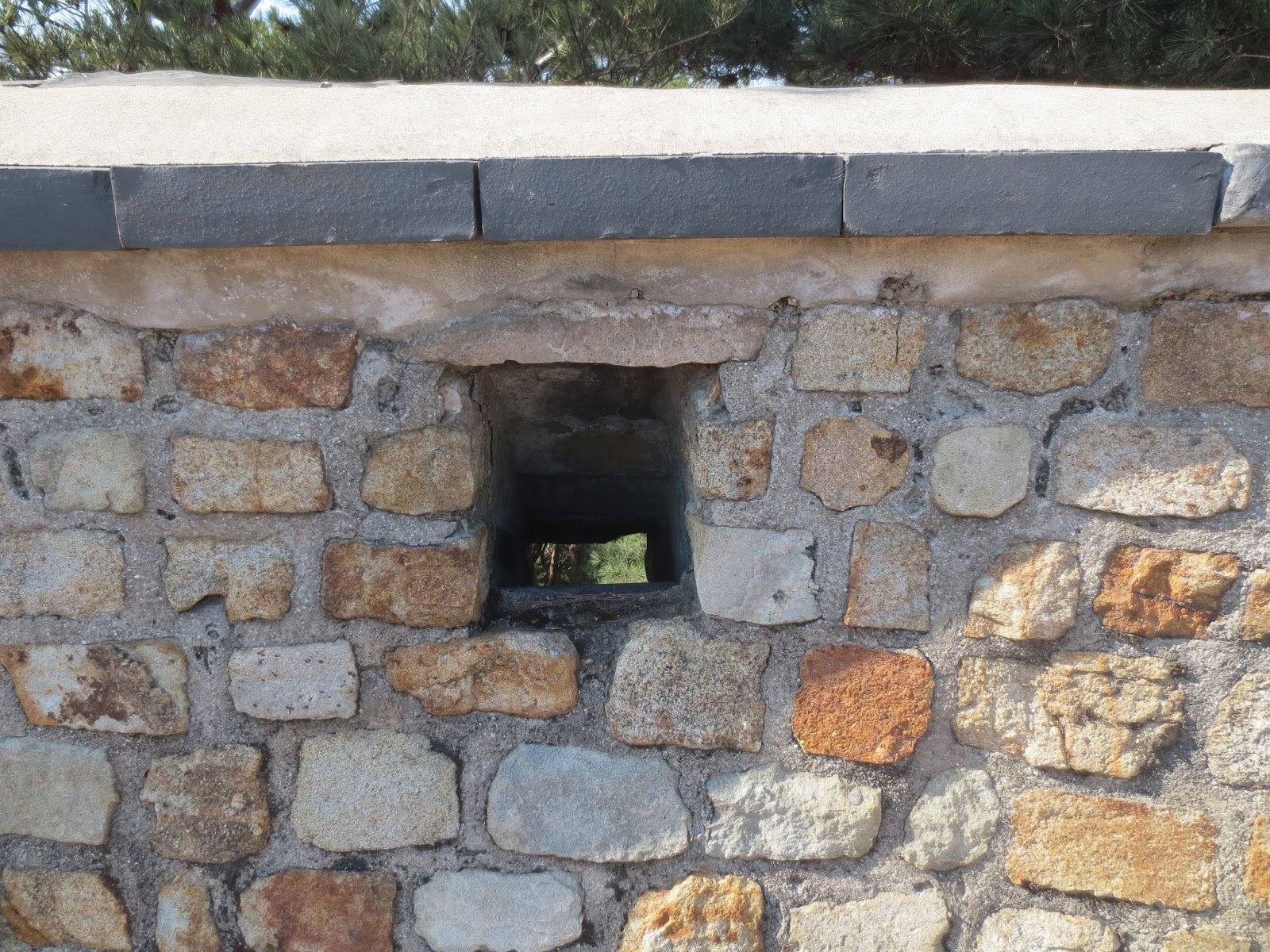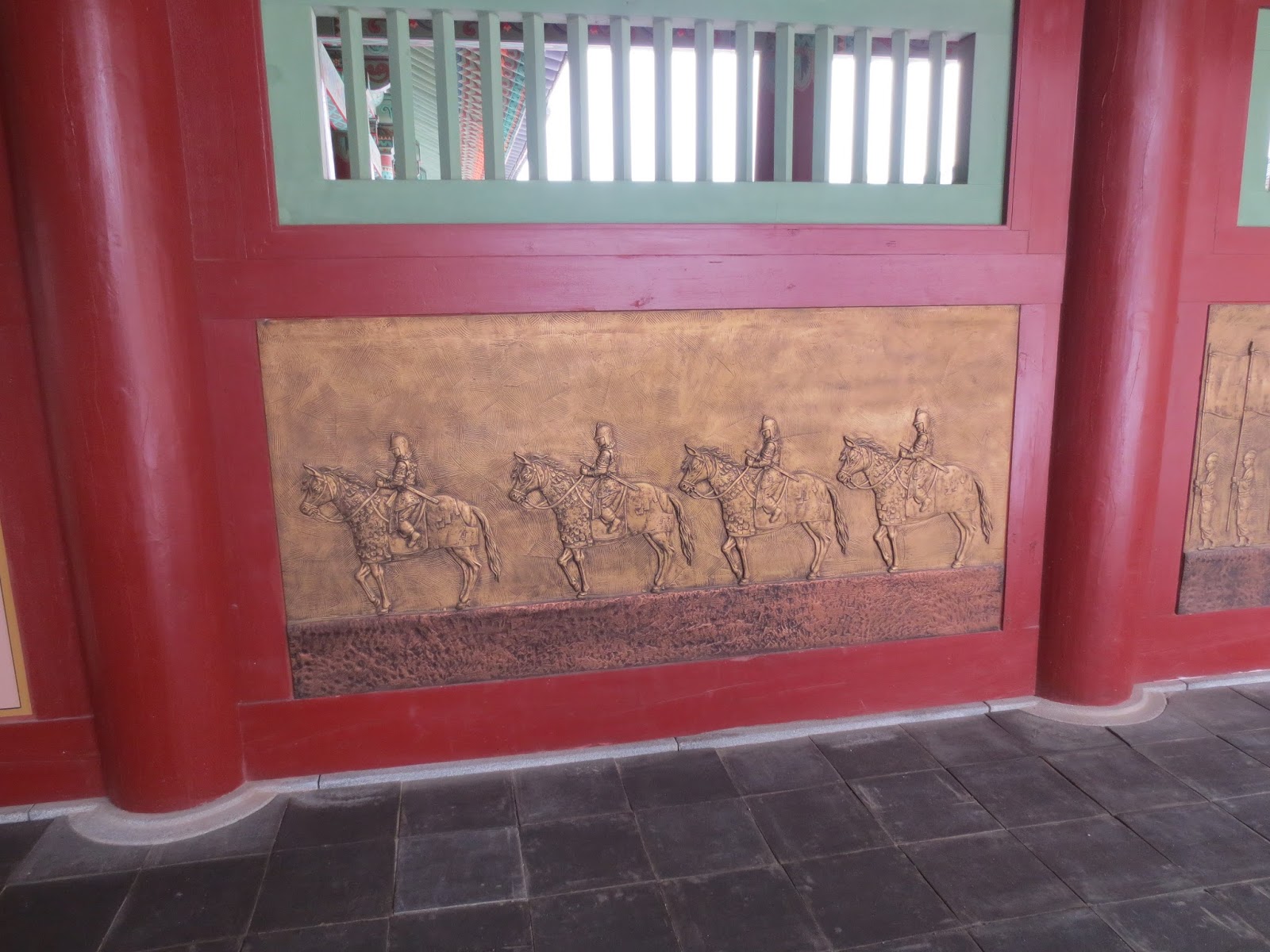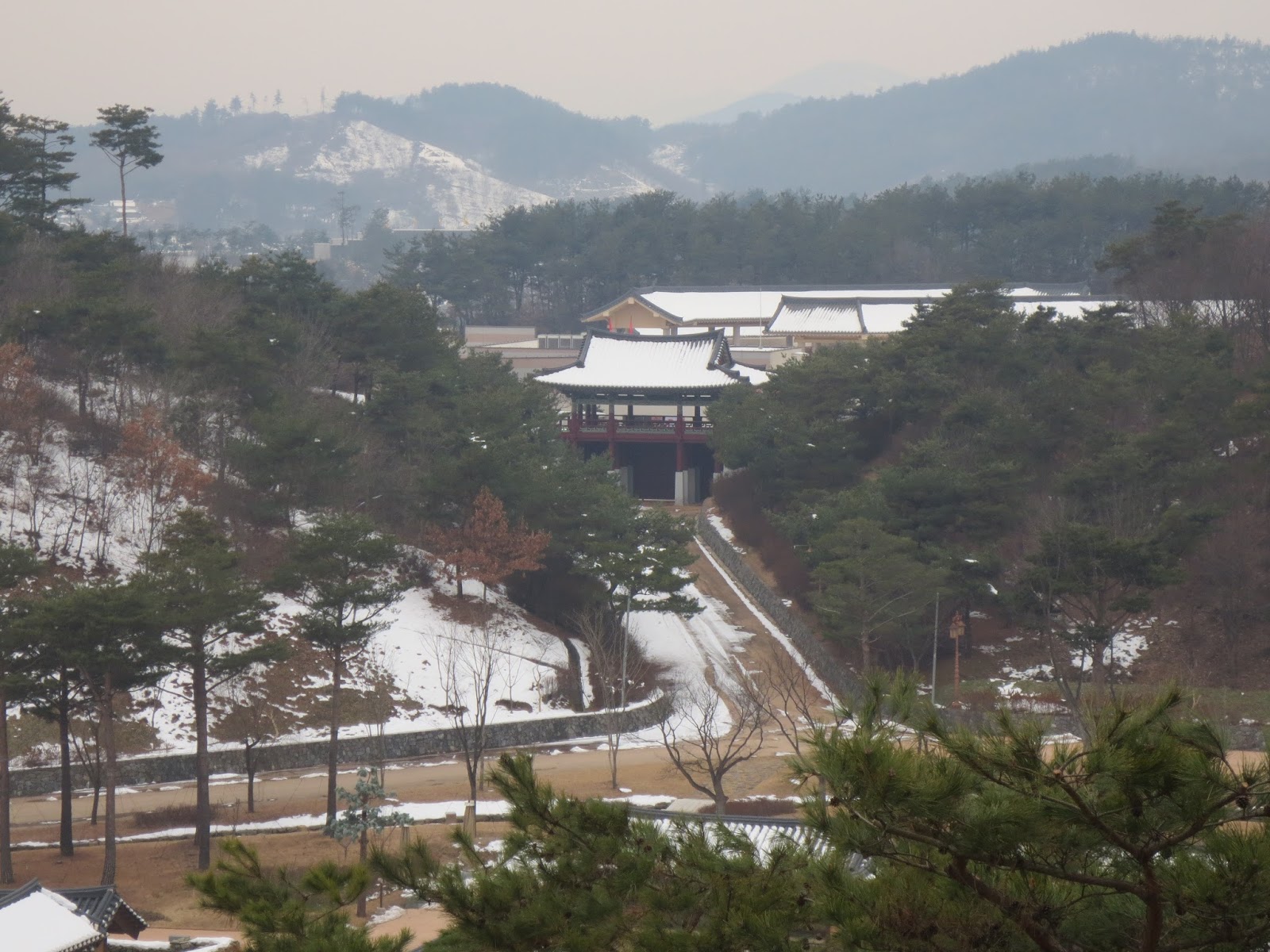The major I work with wanted to see Hwaseong Fortress, so she and I headed out one day to look around It is about 45 minutes from Pyeongtaek, a fairly easy drive for us. Bill and I had visited once before, but we only had about an hour and a half to look around, and you really need more time than that. Below is the entrance to the main palace grounds.
This fortress was built from 1794 to 1796 by King Jeongjo of the Joseon Dynasty to house and honor the remains of his father Prince Sado, who had been murdered by being locked alive inside a rice chest by his own father King Yeongjo after failing to obey the command to commit suicide.
The front walkway was adorned with many of the metal figures and painted tiles. The photos do not do the painted tiles justice.
As we approached the main entrance of the fortress, we saw a large gold Buddha statue off to the l left. We knew we would check it out after the palace grounds.
The walkway is divided into three sections: the larger center section is for royalty, and the smaller outer sections are for less important people.
A room for resting...
This is a mock up of what it may have looked like to have a guest presenting gifts to the king and queen.
This little house was on our way up the hill to the Buddhist temple. The gate was beautiful tile.
Trump l'oeil painting on a building
Entrance to the shrine
The Buddha. Below is a room where you can enter to light an offering.
The temple bell is here in this small tower. The stairs were closed off.
This is the city of Suwon as viewed from the top of the fortress wall. It was a decent climb.
The hole in the wall is slanted down so boiling water/oil or arrows can be aimed down to the attackers below.
This bell was along the fortress wall. For a fee of 1000 won, you could ring it 3 times.
The bell made a really gentle sound when you applied the wooden ringer. It had a very Asian, Buddhist sound.
Beautiful, right? Korea continues to amaze me with its beauty and history.
King Jeongjo
The fortress wall still weaves through much of the city.





















































